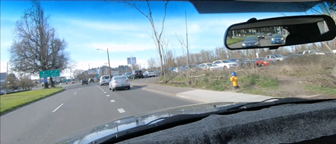Lesson Five: Precision Lane Changes (5.5)
A lane change can be a risky maneuver, especially in heavy traffic or at highway speeds. Accurate perception is the key to managing those risks. You’ve learned how to find open and closed conditions to the front and rear of your vehicle and how to use lane positions to communicate with others. You’ll need these skills to manage a precision lane change. A precision lane change is the process of moving your car left or right (laterally) into or out of an adjacent lane. You’ve already experienced several different types of lane changes. The behaviors you learn in this lesson will minimize the unique risks associated with changing lanes.
List the reasons a driver would change lanes

________________________________________

- Check front and rear spaces for an open and stable gap;
- Use your turn signal and lane position to communicate your intention and request cooperation with others;
- Check your side mirror and blind spot;
- Aim to the target area and keep a shallow angle as you move;
- Maintain speed – don’t slow unnecessarily;
- Cancel your signal;
- Re-evaluate the rear space;
- Get the best lane position and speed control options.
Remember that as your speed increases, your steering input decreases.
 Lane Changes
Lane Changes
Essential Questions
-
When are lane changes necessary?
-
What is the procedure to change lanes?
-
How is SIM applied before, during and after changing lanes?